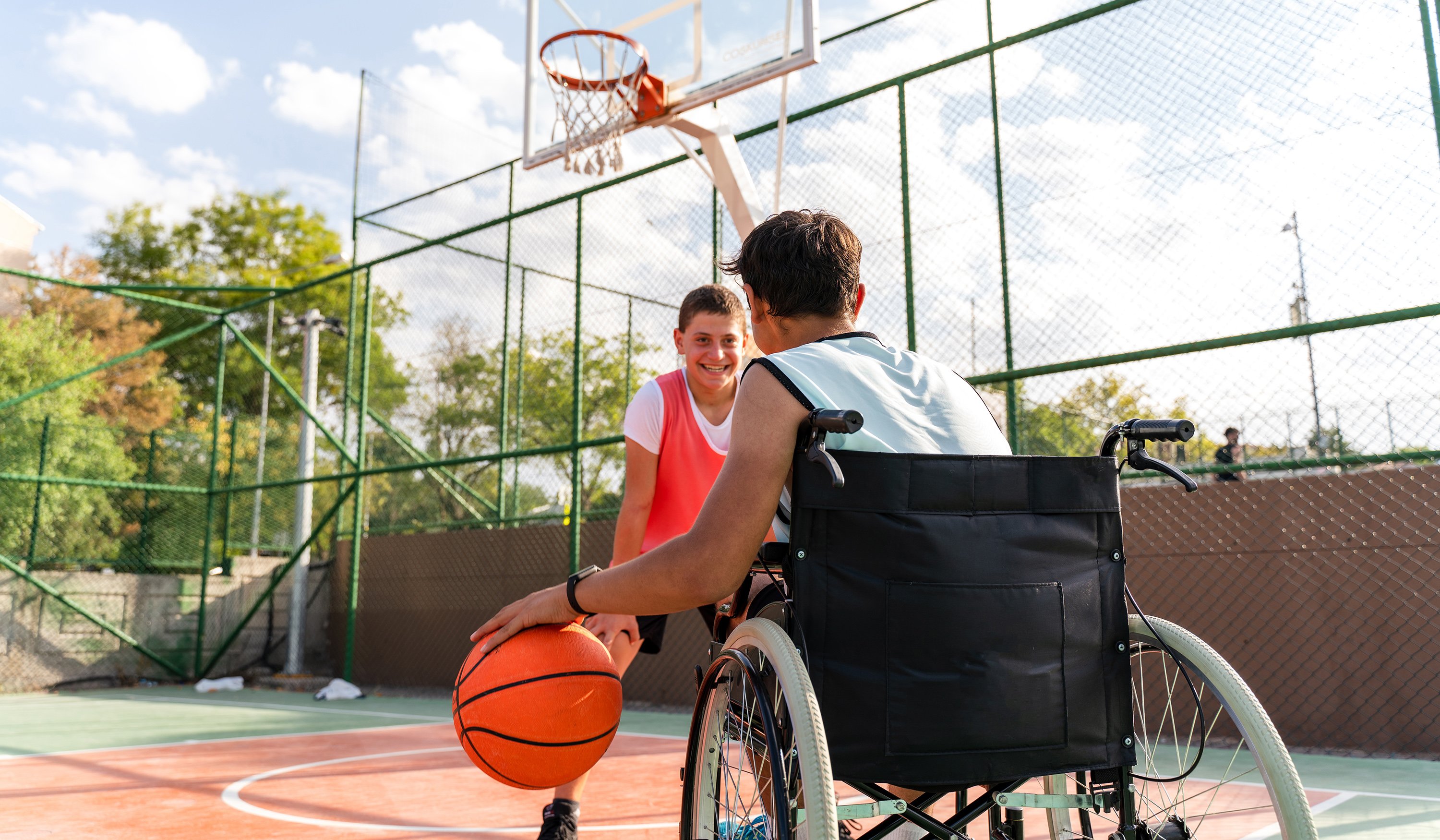
Staying active benefits all children, but for kids with physical or cognitive differences, sports can be a game-changer for their overall wellness.
Children with disabilities are prone to be more socially isolated and less physically active than their peers, regardless of their impairment. Adaptive sports are those which are modified to allow people with physical and/or mental disabilities to participate. These games put athletes on an even playing field and build teamwork, confidence and character. More importantly, they help strengthen the body as well as improve endurance and flexibility, reduce body fat and increase lean mass and bone density. Kids who play adaptive sports are also less likely to be anxious or depressed and are more independent later in life.
There is a sport for everyone - from those who are just learning to become active to elite para-athletes, but you must do it safely. Here are a few tips on how to introduce your kids to adaptive sports.
At what age should kids with disabilities start to get involved in sports?
It’s never too late to get active, but the sooner the better! It is recommended to start exposing children to organized sports and activities between 4-6 years of age. This is when kids start branching out from individual play. It will also help set them up for a childhood of activity. If you wait until adolescence, your child may identify with being non-athletic and may not try a sport because they believe they can’t do it.
What challenges do kids with disabilities face related to sports and participation?
The biggest barrier to participation is access. This can mean physical barriers, rough terrain, cost or lack of awareness of the programs and resources available. Getting connected to the right resources can open a wide variety of opportunities.
Why is inclusion in sports and exercise important?
Inclusion provides individuals with a disability access to all the benefits of physical activity. For kids with disabilities, there are well documented health benefits of physical activity, in addition to clear social and mental health benefits obtained from participating in sports with their peers. When these athletes have positive experiences with physical activity/sport, they begin to build an identity as an “active” person who makes healthier and more confident choices.
What are some ways to create a more inclusive environment?
Inclusion can mean more equitable access to facilities, programs and equipment. It can also mean mainstream programs and schools adding wheelchair or adaptive categories to their existing infrastructure. Inclusion can also describe a unified sport where adaptive and non-impaired athletes compete together to build on a shared experience and understanding with their peers.
How can families help their child feel empowered to participate in sports? How can kids get involved in the process?
Adaptive fitness and sports begin with what the athlete CAN do and focuses on their strengths and abilities - not their disability. The adaptions of sport and physical activity are nearly endless, so allow your child to pursue the sport or activity they show interest in. There's always an opportunity to progress and achieve more through proper training and participation in a sport or physical activity.
What should families do before signing their child up for a sport?
Before starting any activity, your child should have a comprehensive pre-participation physical evaluation to make sure it is safe to participate. Research shows these types of exams uncover medical concerns in 30-40% of children with disabilities.
You’ll also want to make sure your child is cleared by a doctor familiar with adaptive sports and specific medical considerations such as medications, equipment, changes in bone density, the risk associated with seizures, the risk associated with contact and whether someone is predisposed to overuse injuries or muscle strains. Without proper technique and guidance, your child is likely at greater risk of injury.
What information would be helpful for parents to know about sports/exercise in this population? What resources are available?
Children with disabilities are much more likely to be sedentary than their peers. Yet, they are also much less likely to receive exercise and physical activity counseling from their health care team. The following resources could be beneficial in setting your child up for success when pursuing adaptive sports:
- Children's Mercy Adaptive Sports Medicine Program provides tailored musculoskeletal and rehabilitative care to existing and future adaptive athletes.
- Accessible Sports Greater Kansas City is a great resource to find local programs.
- Move United is a national resource for all types of adaptive sports.

